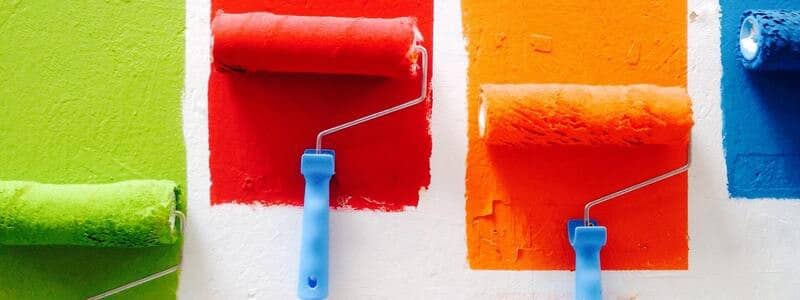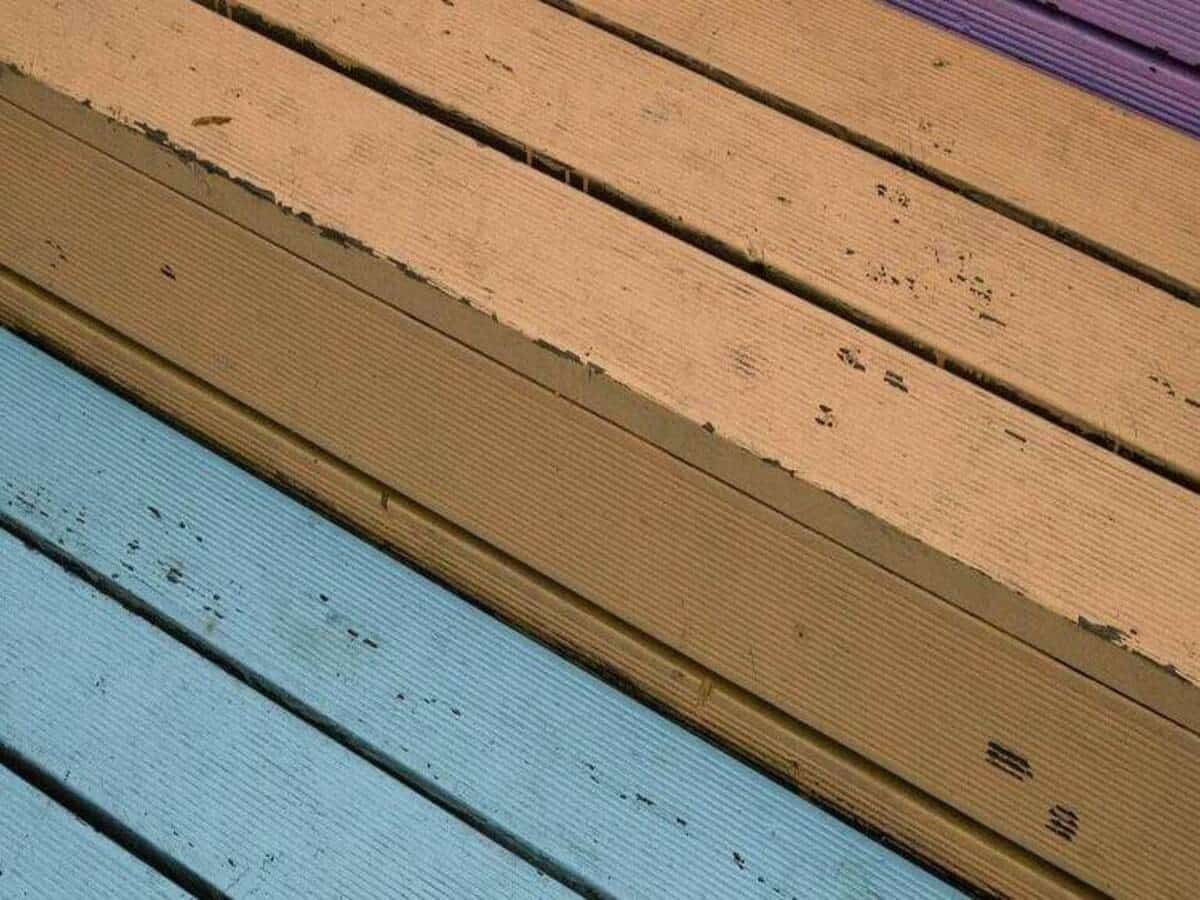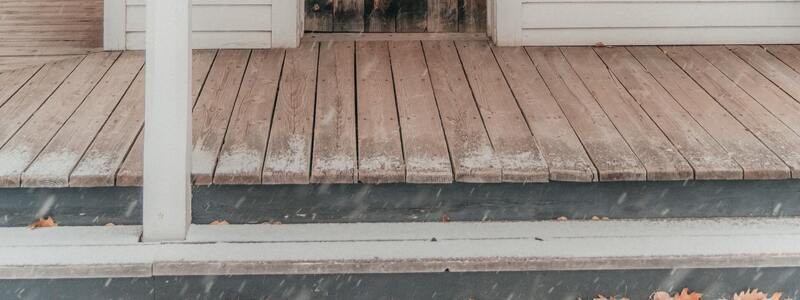Nothing sets the scene for summertime fun quite like a beautiful deck at your home. Wooden decks yearn for barbecues and family and friend get-togethers. You are a part of a glorious American tradition. Having a deck adds a layer of personality and life to the exterior of your home. Your deck is an extension of the rest of your home. So when you see peeling paint and washed-out stain on the wood, it can put the brakes on the summertime celebrations.
As I’m sure you’ve realized, having a deck at your home requires a decent amount of maintenance to remain a polished-looking beauty. Wood can become painful to look at if left unprotected in the elements. Your deck will warp, crack, and twist without the proper protection. The sun isn’t especially friendly to your deck either. Ultra-violet rays discolor the deck over time, whether it’s unprotected, painted, or stained. The sun is also responsible for the breakdown of the wood’s lignin. Lignin is the natural glue that holds its fibers together.
Since you’ve noticed the paint is peeling and just starting to lose its overall shine, you start asking yourself, should I paint my deck?
Whether you choose to paint or stain your deck, the decision comes down to the look you want, what kind of protection you need, and how much time and energy you want to spend on applying the paint or stain. Here’s a breakdown of the differences between painting and staining your deck.
Whether you decide to paint or stain your deck depends on the appearance you desire, the level of protection you require, and how much time and effort you want to put into the painting or staining process.
Prepping Your Deck For Painting or Staining
No matter which route you ultimately decide to choose, the absolute first step in the process is to prep your deck. This includes sweeping away any trace amounts of dirt and debris, scrubbing the wood of your deck with a deck-specific cleaner, and smoothing away rough patches with sandpaper.
Ensure that any rotten wood boards are fixed and replaced, that all nails and screws are tight, and that any holes are filled with exterior-grade wood filler. For paint to adhere correctly and for stains to cure, a clean surface is necessary.
Clean your deck, then allow it to completely dry. You will need to strip and sand your deck if it is already painted and seems old from use and abuse.
Painting Your Deck
There are many reasons why you should paint your deck, but be aware that by doing so, the paint hides the distinctive details in the wood that give it character. Painting your deck has more color options and lasts longer than staining.
Many homeowners like the uniform appearance that paint offers. If your deck is especially old and worn, this might be a nice alternative. Paint totally conceals the grain of the wood, whereas stain seeps into the wood, giving your deck a tidy, sharp appearance. If your deck is more aged, paint can conceal faults (such as cracks and other blemishes) far better than stain, giving it the appearance of a brand-new deck.
By selecting an organic color scheme, such as taupes, browns, sand-colored tones, and shades of green that mirror the great outdoors, you can still get a natural effect with paint even though you are hiding the wood grain.
Because of its consistent application, paint provides your deck a more streamlined, minimalist aesthetic for more contemporary homes, whereas stains allow a wood’s subtleties and differences to shine through. Additionally, there are additional color options with paints, and you may even choose a paint.

When selecting paint, you will have two options:
Oil-based paint
These paints offer moisture protection and frequently have extended shelf lives. They are more resistant to normal wear and tear than latex because of their strength. Oil-based paints often provide a smooth finish and have good surface adherence.
Latex paint
The ideal places to utilize latex paints are in environments with higher temperatures since they resist UV fading. These paints dry faster than oil-based paints, emit less smell, and are resistant to cracking and chipping.
Pros of Painting Your Deck
- Paint covers up the imperfections in your deck. If your deck is old and worn out, you might not want to show off every inch of it. If your wooden deck is nearing the end of its life, painting is an excellent option for hiding any defects in the wood. An old deck can be brought back to like-new condition by painting.
- You can enjoy many color options. You may easily match the deck to the exterior of the rest of your property or utilize it to enhance the color of your home.
- Paint isn’t too difficult to maintain. You won’t need to refinish your deck any time soon if you choose to paint it. A well-done paint job by a reputable contractor can last ten years before needing to be redone. In contrast, stains don’t provide the same level of protection against outdoor conditions and must be redone every few years.
Cons of Painting Your Deck
- Paint typically is permanent. It’s practically a given that you’ll always paint your deck after you’ve made the decision to do so. It is simple to transition from a stain to paint, but it takes more effort, time, and money to transition from paint to a stain.
- The wood becomes moistened by painting. Decks are horizontal, so the paint just lays on top of them, which causes water to collect in some spots. This causes the wood to get damp over time. The paint will ultimately start to flake and chip as the deck naturally grows and shrinks with the weather.
- Painting hides the wood’s natural beauty. Your wooden deck’s unique aesthetic features are hidden when you paint it. You might regret covering up the natural beauty of your hardwood deck if you enjoy the way it looks and feels.

Staining Your Deck
Your deck is shielded from the elements by staining it, preserving and enhancing the wood’s original, natural beauty. You may emphasize wood’s distinctive qualities and lovely grain. For your deck, you’ll probably choose a clear sealer or a semi-transparent stain, but stains can provide a lot of options:
Solid Stains
Solid stains hide the majority of the wood’s natural features, much like with paint. It produces a darker, more uniform appearance.
Semi-transparent Stains
Semi-transparent stains offer a hint of color while letting the wood’s distinctive qualities and patterns show through. They also offer weather-proofing and UV protection.
Clear Wood Preserves
This kind of stain works best on decks made of beautiful wood, including rich cedar and redwood, where you want to preserve the wood’s natural color and highlight its beauty. To prevent the wood from fading over time, certain transparent wood preservatives provide UV protection. To prevent the wood from growing mold and mildew, the majority also contain fungicide. Additionally, they have less wax than a transparent water repellent or sealer.
Pros of Staining Your Deck
- The wood grain will be sealed by a high-quality stain, preventing moisture from infiltrating your deck and rotting it. In general, a good stain retains moisture better than paint.
- You can emphasize the attractiveness of your wooden deck by staining it. A gorgeous wood deck will be enhanced with the correct stain and finish. With a stain, you may bring out the natural beauty of the wood as opposed to painting it, which entirely hides its charm. If your deck is built of cedar, cypress, or redwood and is in good condition, you may choose to stain it to bring out its color.
- Paint tends to be more slippery than stain. While some stains can create a slippery surface, most are flatter and less slippery than a thick coat of high-quality paint. Stain is typically a preferable choice for decks if slipping and safety are concerns.
Cons of Staining Your Deck
- The lifespan of a stain on wood is limited to a few years. Decks require a new staining every other year on average. Compared to quality, professional deck staining, a quality, professional paint job will last longer. A semitransparent oil-based stain, however, can endure for three to five years.
- Some premium woods don’t take to stains very well. Decks made of tropical hardwood are quite beautiful, but they are very dense and don’t take stains very well. Choose an oil-based penetrating stain if you’re determined to apply a stain, which is sensible given the natural beauty of tropical hardwoods. Apply a clear wood preservative every three to four years to counteract harmful UV rays if you opt without staining.
- Not every defect in the wood will be concealed by staining. A stain won’t do wonders if your deck is very old and weathered. If you want to cover up defects in the material, paint can be a better solution.
Cracks are not filled by staining. A wooden deck can have defects, small holes, and grooves filled with paint. Because stain is thinner than paint and won’t do much to cover cracks and splinters, you can’t rely on it as a repair technique.
































